What a week: Tuesday – Jac’s procedure
On Tuesday, Jac had the procedure done to fix her heart. Those of you who’ve been readers for a while will know that Jac’s had some heart issues in the last year or so (click here to read the related posts). I don’t know why, but I didn’t tell anyone about it apart from my boss and workmates (and then I only mentioned it to them because I had to – I needed to take time off work on the day following the procedure). I suppose I didn’t mention it to anyone else because I was a little stressed out about it and didn’t feel like explaining it to people and having to think about it every time I talked about it. And it wasn’t like anyone could really do anything except say “I hope it goes well.”
When Jac went to see the cardio a while ago, he explained the problem to her this way – he asked her to think of her heart as a house. Her house’s structure was sound, and its plumbing was good, but its wiring was wonky and needed to be fixed. He referred her to another cardiologist at Royal Perth Hospital who could perform the procedure necessary to fix the wiring problem.
The procedure is an “electrophysiologic” or “EP” study. It was a day procedure – Jac checked in at around 7:30am and was home by 7pm the same day. She was given a little booklet from RPH that explained it all. Here are a few excerpts (easier than me trying to re-explain it) so you can get the gist of what the procedure involved.
“An electrophysiology (or “EP”) study is a technique used by cardiologists to evaluate and often treat abnormalities of the heart’s rhythm. The minute electrical impulses (which cause the chambers to the heart to contract) can be measured using special thin wires called electrode catheters. These can be passed through veins (usually in the groin) to the heart. The electrical signals detected by these catheters are amplified and displayed on a television screen, and are also recorded on a computer. By analysing these recordings during normal heart activity, and during fast, slow or irregular activity, the accurate diagnosis of heart rhythm disorders can be made.”
So basically, the EP study was done to pinpoint the electrical problem with Jac’s heart which had been causing the SVT. Jac was awake during the procedure -they gave her local anaesthetic at the spots where the catheters were to be inserted, and she said she was given something to drink they called “jungle juice” to relax her.
Once the electrical problem had been identified through the EP study, another procedure called catheter ablation was performed to correct it:
“Some heart rhythm disturbances, particularly those arising from the atria (upper chambers) or from circuits involving both the atria and ventricles, can be cured by delivering a high frequency (radiofrequency) electric current directly to the area of the heart muscle.
A special steerable catheter is positioned in the area pinpointed by the preceding EP study. Electric current is then delivered which results in heating of the heart tissue at the end of the catheter. Heating the tissue destroys the electrical pathway or group of electrical cells responsible for the abnormal heart rhythm. The electrical current is given in pulses lasting 30 – 60 seconds, and a number of pulses may be required.”
The booklet did warn of possible complications – the EP study carried a low risk of blood clots, damage to the heart wall, heart valves or blood vessels, bleeding, bruising and infection. They sometimes have to insert an electrode catheter from the upper chest or neck, and with this comes a small risk of lung collapse (they didn’t need to do this, in Jac’s case). Of course, Jac’s wound could technically still become infected, but it’s looking good so far. She just has a bruise – she can feel it’s there, but it doesn’t really hurt. If the catheter ablation is performed on the left side of the heart there is a small risk of a clot embolism, which can cause a stroke. Another risk from the catheter ablation is that the normal conducting system of the heart can be permanently damaged, resulting in a too-slow heartbeat, which will mean a pacemaker will need to be implanted.
The booklet did state that there had been very few complications from the procedure carried out on patients at RPH. Out of 382 patients who had had the procedure, two required a permanent pacemaker. Two patients suffered mini-strokes but had made a full recovery. One patient suffered a lung collapsed and needed a chest tube inserted to re-inflate the lung. But the booklet also stated that no patient has died as a result of catheter ablation at the hospital. Still, it was hard not to think about what might go wrong. I didn’t talk about it because thinking about these things upset me, and I didn’t want to stress Jac out. I knew she really wanted to go ahead with the procedure because the probability that it would fix her heart rhythm problems was far greater than the risk of complications, and I wanted her to go into it feeling as positive as possible.
I’d wanted to take the day off and go to hospital with Jac in the morning, but she insisted I go to work as usual as her mum would be with her. She said she’d just see me in hospital or at home after work. She’d been told the procedure take anywhere from an hour to four hours, and so I had no idea when she’d be out. It was hard to not think about it, but I was pretty busy throughout the morning, and time flew by.
Around noon, a nurse from RPH rang to say Jac had come out of her procedure and was back in the ward. She had to stay in bed and not move for a few hours – until 6pm in fact. At 6pm they’d have her get up and walk around, and if she was ok and had no further problems i.e. she didn’t bleed uncontrollably from the place they’d inserted the catheter, she would be able to go home by around 6:30 or 6:45. We were welcome to come at anytime from now on and see her if we liked. I asked if there had been any complications, but the nurse said she couldn’t give out details over the phone, and that Jac could tell me all about it when I saw her. I took that to mean Jac was ok, and felt quite relieved. I figured if things weren’t good they’d have said “You’d better get down here” as opposed to “you’re welcome to come visit any time”. I rang Jac’s mum and together we decided we wouldn’t race over to the hospital, but instead let Jac rest at least a couple of hours. If she wasn’t supposed to move it was probably better if she was left undisturbed to sleep. “Besides”, I said to Jac’s mum, “If she’s up to having visitors she’ll probably send me a text message saying she’s bored”. In the meantime, my boss had arrived back at the office from a meeting, and she’d picked up lunches for everyone from 88 Royal, a lunch bar in East Perth.
I’d rung our order through to 88 Royal so it was all ready to go when my boss got there. That lunch bar really makes some yummy lunches. I’d asked for a tuna and salad plate (AU$6.80 – great value!). I know my relief that things had (so far) gone well with Jac’s procedure would’ve had something to do with my enjoyment of my lunch, but this was seriously one of the best lunches I’ve had this year. After taking the photo, I gave my beetroot away to one of my colleagues, but everything else – carrot, lettuce, capsicum, snowpea sprouts, hard-boiled egg, cheese, pineapple ring and tuna patties – everything just tasted so fresh and delicious. It was so very simple, but so very good.
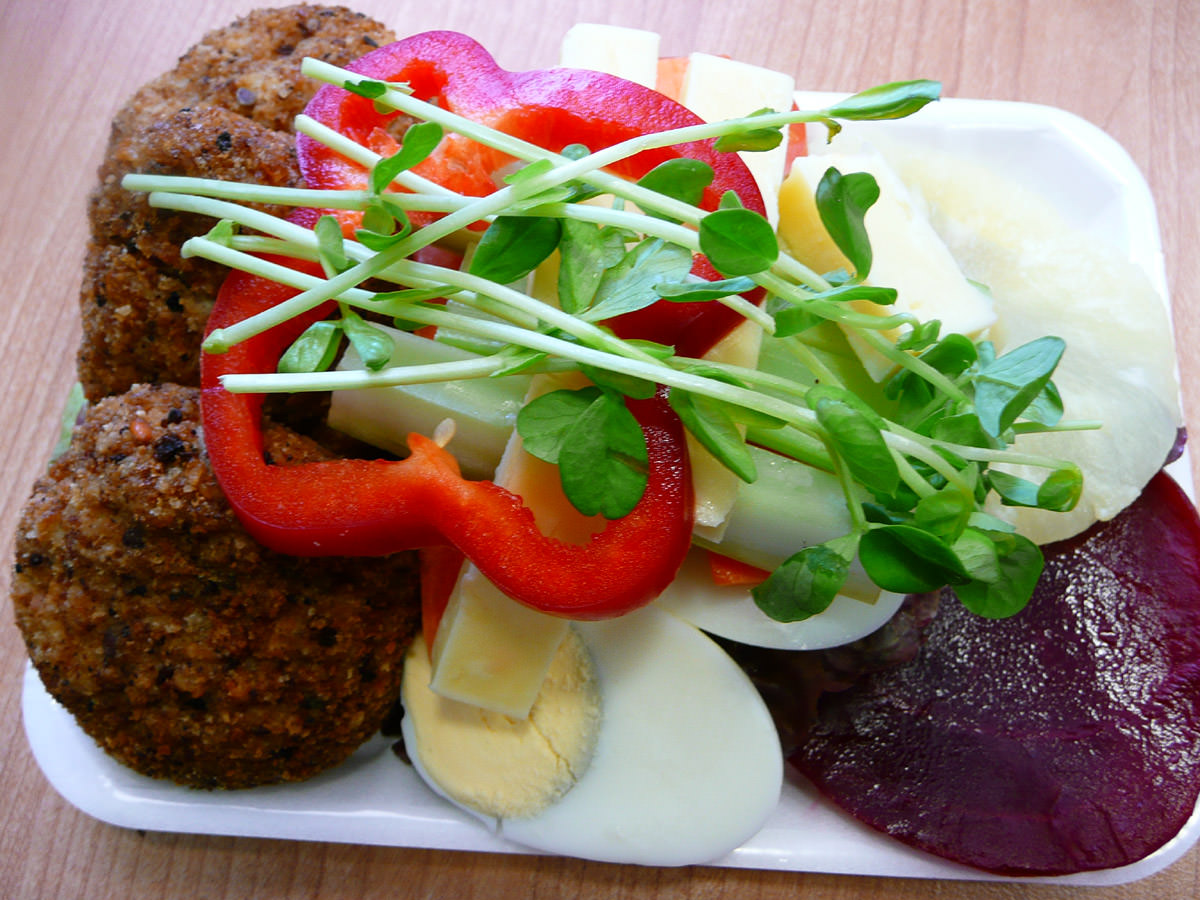
The tuna patties were beautiful. I wish I could get lunch more often from 88 Royal.
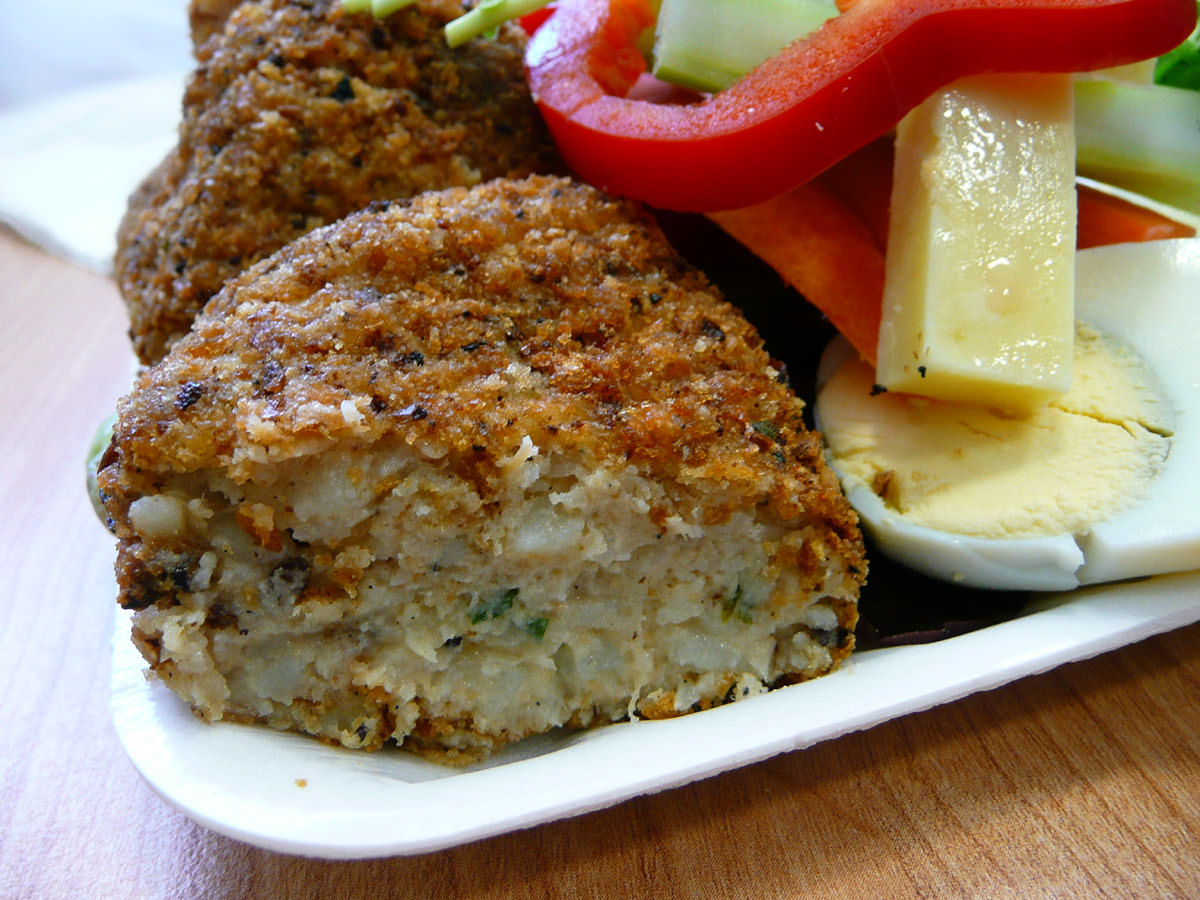
My boss asked if I wanted to leave right away to see Jac in hospital, but I told her I’d just leave around 3:30 or 4pm and let Jac rest for now.
Not long afterwards I laughed when I received a text message: “So bored! R u coming in?”
I texted back: “I am aiming to leave work at 4pm. Stay flat and still until I get there. xoxo”
She texted back: “Bring cake/biscuits & flavoured milk, s, b, h or v.”
And so when I left work that afternoon I headed straight to Woolies to pick up the items Jac requested. I grabbed a jammy swiss roll, some raspberry jam tarty biscuit thingies (in case she felt like sweet biccies), Sakata Cheese Supreme corn crackers (in case she felt more like savoury biccies) and some banana-flavoured milk. I presumed that “s” was strawberry as Jac can’t stand spearmint flavoured milk, “b” was banana, “h” was honeycomb (?) and “v” was vanilla. I know Jac has been trying to cut down on caffeine and wouldn’t want anything chocolate or coffee flavoured. I couldn’t find honeycomb or vanilla, and most of the available flavours were all variations of coffee or chocolate. After Woolies I stopped by Cafe Cafe and grabbed a date crumble slice for Jac, as she loves dates and she loves slices. Then I caught the train.
I could see Jac was fine when I arrived at her room – she looked up from what she was doing (sending a text message to a mate) and gave me a big smile. She dug around in the bag of goodies and was thrilled to discover the date slice. A couple of bites in, she said she’d been bored out of her brain. She wasn’t allowed do anything, wasn’t allowed to even sit up in bed, and she hadn’t been allowed to get dressed. As a result she’d been feeling grumpy and impatient. Jac finds it extremely hard to sit still. She’s one of those really active people who needs to be doing something all the time, and so having to lie still in bed for hours drove her nuts, even though there was an important, medical reason for it. But I think the date slice, more so than the bringer of the date slice, helped improve her mood :). She’d eaten about half of it when the dinner lady rocked up.
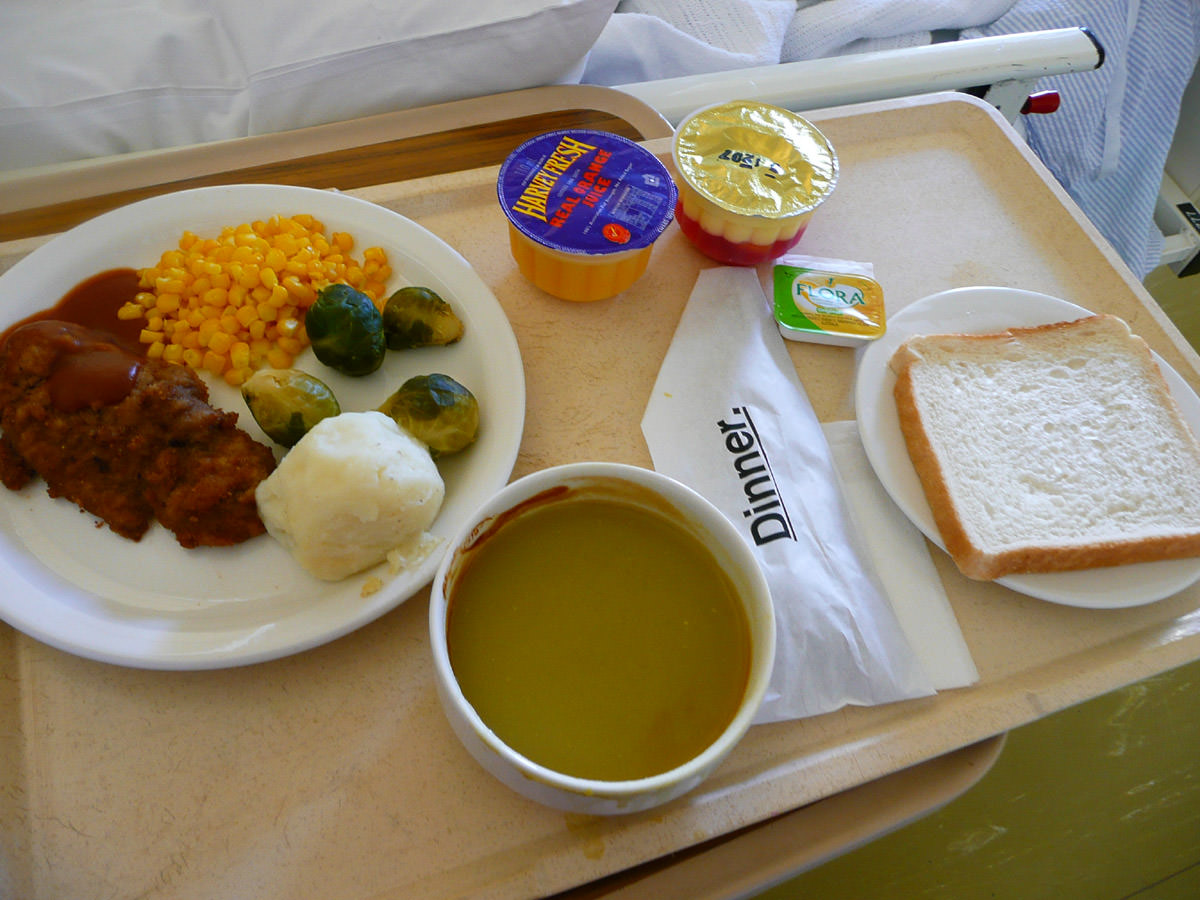
And so for the second time, dinner at RPH. This time it was a crumbed pork chop with gravy, corn kernels, brussels sprouts and mashed potato (last time it was sweet and sour pork). As Jac was still not really allowed to move, I fed her her dinner. She didn’t want the bread, but got me to cut her brussels sprouts open and spread the margarine on them. She reckoned the brussels sprouts were the best part of the meal and really enjoyed them. I tried the pork – the gravy had gone all gluggy and the pork was a little on the salty side, and the crumbed coating fell right off the meat as soon as I started cutting into it, but it wasn’t too bad. I was still feeding Jac mouthfuls of pork with mashed potatoes and brussels sprouts, spilling corn kernels everywhere, when the cardiologist turned up to check on her.
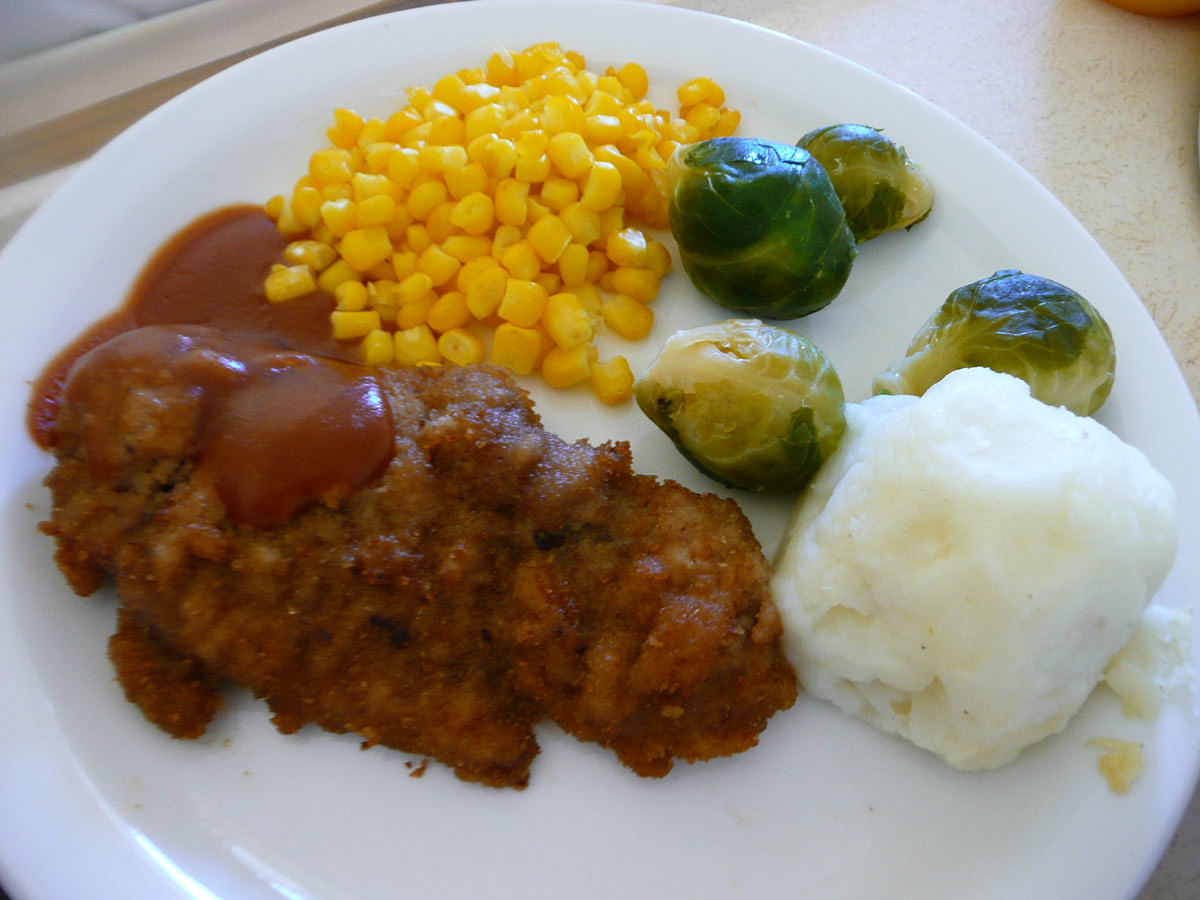
Dinner was halted while the cardio spoke to us about Jac’s procedure in further detail. She was very confident it had all gone well, and if there were to be any problems, they’d normally present themselves pretty quickly after the procedure. She said Jac was to take things easy – she’s not allowed to play hockey on Monday but should be fine for the following week. There was a chance the SVT could recur, and down the track the procedure could be repeated if necessary, but the chance of that was really small. Our fingers are crossed.
The soup was pretty good, actually. Typical pea and ham soup swampy colour, tasting more of pea than ham, but quite nice. Of course, the really good pea and ham soups are the ones made using the real ham bone after Christmas. Mmmm.
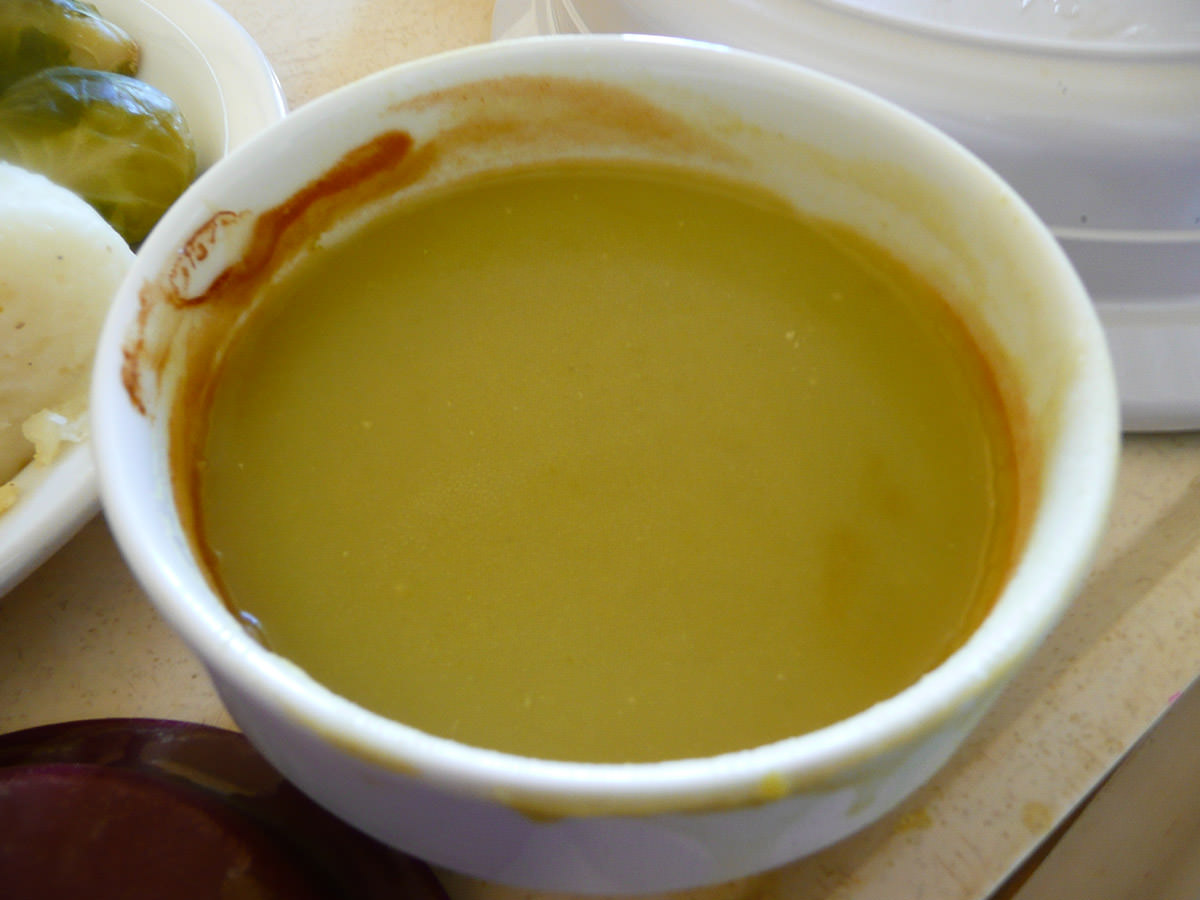
Jac didn’t eat her pudding, but I took it home for later.
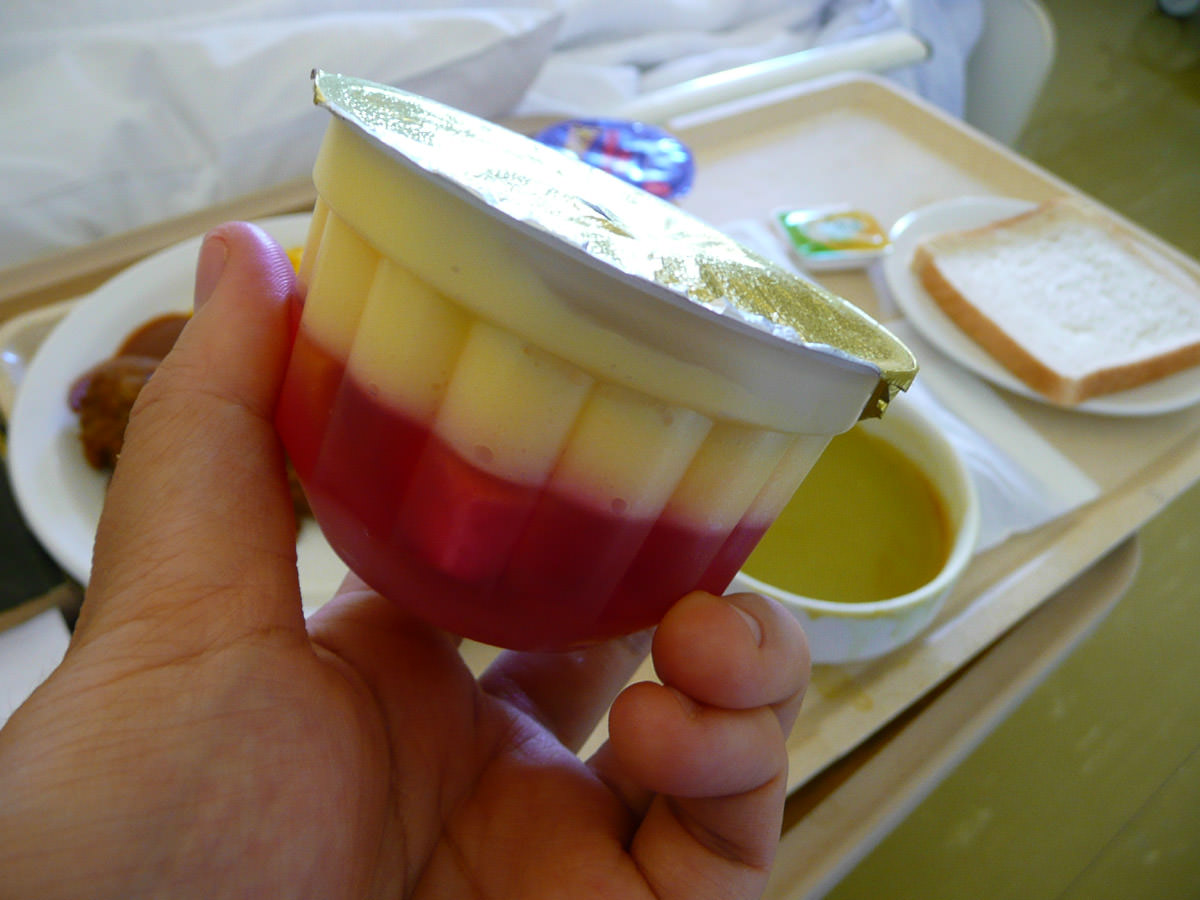
After dinner and fully dressed, Jac stood up and had a little walk. No problem. It was home time.
More coming up tomorrow (or rather, later today, as it’s 12:56AM)…